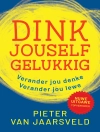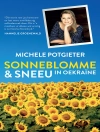Gnosticism – derived from the Greek word gnosis, to know – is the name given to various religious schools that proliferated in the first centuries after Christ and, at one time, it almost became the dominant form of Christianity. Yet some Gnostic beliefs derive from the older Mystery traditions of Greece and Rome, and the various Gnostic schools came to be branded as heretical by the emerging Christian church. Indeed, although some Gnostic beliefs are close to mainstream Christianity Gnosticism also held that the world is imperfect as it was created by an evil god who was constantly at war with the true, good God; that Christ and Satan were brothers; that reincarnation exists; and that women were the equal of men As a result, the Gnostics held the Feminine Aspect of God – whom they addressed as Sophia, or Wisdom – in very high regard. They also stressed that we each have a spark of the Divine inside us which, when recognised and developed, will ultimately liberate us from the prison of the material world. Although largely stamped out by the Church by the sixth century, Gnosticism survived underground through groups such as the Bogomils and the Cathars, and influenced the Renaissance, the Enlightenment, the psychologist Carl Jung, the Existentialists, the New Age movement and writers as diverse as William Blake, W.B. Yeats, Albert Camus and Philip K. Dick. In this book, Sean Martin recounts the long and diverse history of Gnosticism, and argues for its continued relevance today.
关于作者
Sean Martin is a writer, poet and filmmaker. He has written books on The Knights Templar, Alchemy and Alchemists, The Gnostics, The Cathars, Andrei Tarkovsky and New Waves in Cinema.












